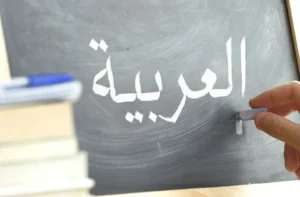Arabic verb patterns and conjugations are among its many complexities that are particularly difficult to learn but necessary. Arabic is a historically and culturally rich language with a complicated but intriguing grammar structure.
In this article, we’ll study the basics of Arabic verbs and tenses, making them more comprehensible for learners. Acquiring knowledge of Arabic verb tenses might resemble piecing together a challenging puzzle. Knowing when and how to utilize each verb effectively can let you see it as a multifaceted gem.
Introduction of Verb Patterns
The majority of Arabic verb patterns have a trilateral, or three-letter, root. Furthermore, according to theory, each trilateral Arabic root can be changed into one of fifteen different verb forms (الأوزان, al-awzaan).
Every form has a fundamental meaning related to the root’s overall meaning. Here’s a more thorough explanation using فعل (fa3ala, to do) as an illustration.
The verbs classified as abstract trebles can have many patterns depending on how the past and present forms are combined. For example, the pattern “FaƐala – Yaf3lu فَعَلَ – يَفْعُلُ” refers to the pattern where the past comes first for FaƐala and the present verb comes first for Yafa3alu. For example:
- Meaning (to write) of كتَبَ – يَكْتُبُ.
- The Fa3ala – Yaf3ilu فَعَلَ – يَفْعِلُ pattern. For example, جلَسَ – يجْلِسُ signifies to (sit down).
- The Fa3ala – Yaf3alu فَـعَـلَ – يَـفْـعَـلُ pattern, for example: سأَلَ – يسْأَلُ meaning (to ask).
And numerous other combinations of the three-letter verb patterns and roots.
Understanding Roots and Patterns

The root system of Arabic verbs is usually made up of three consonants. Many words have this root system as their foundation, resulting in a large and diverse lexicon. For instance, words like “كتب” (kataba, “he wrote”), “كتاب” (kitab, “book”), and “�كااتب” (katib, “writer”) can be derived from the root “كتب” (k-t-b).
The root of every verb in Arabic is three or four letters. Suffixes and prefixes are added, or specific letters are omitted, to create various verbs. The verb ‘فعل’ (to do) is typically a template to explain how verbs change therefore not all the variants demonstrated have a meaning. It is simple to understand what has been added to or removed from the root when the same verb is used in all of the verb patterns and forms.
Examples and Practice
- Practice Frequently: Reiterating information is aided by daily practice.
- Use flashcards: Verb patterns and forms can be remembered with the aid of flashcards.
- Communicate with Local Speakers: To increase your fluency, practice communicating with native Arabic speakers.
- Use language apps: Memrise and Duolingo are two examples of apps that provide structured learning pathways.
- See Arabic-language media: Watch and listen to Arabic-language programming, movies, and music.
Form 1- Fa33ala, فعّل
enhanced form 1 by adding a shadda to the verb’s middle radical, which is doubled.
is frequently a causative form 1 verb.
The meanings of خرج and خرّج are respectively “to go out” and “to make (s.o.) go out; to graduate (s.o.)”.
Form 2 (faa3ala) – فاعل
enhanced form 1 by inserting an alif in between the form 1 verb’s first and second radicals
offers the form 1 verb an associative meaning most of the time; it describes someone acting on the issue to or with another person.
The verb “to work” is عمل (3amala); “to treat or deal with (s.o.)” is عامل (3aamala).
Form 3 of Verb Patterns (af3ala) is أفعل.
Form 1 was expanded upon by adding an alif before the verb and covering the first radical with a sukuun. It is a causative version of the form 1 verb, similar to form 2, and has the following meanings: خرج means “to go out,” خرّج (means “to graduate (s.o.),” and أخرج means “to expel, to evict; to produce.”
Resources for Further Learning
For learning Arabic verbs and tenses, the best resources are books, language learning applications, online courses like e Arabic learning, and language exchange programs.
Conclusions of Arabic Verb Patterns
Although learning Arabic verb patterns and roots can appear difficult at first, it becomes a lot easier with regular practice and the appropriate materials. Fluency can be achieved via comprehending verb forms, root systems, and conjugation rules. Remember, every language has its intricacies, yet each step you take puts you closer to mastering Arabic.